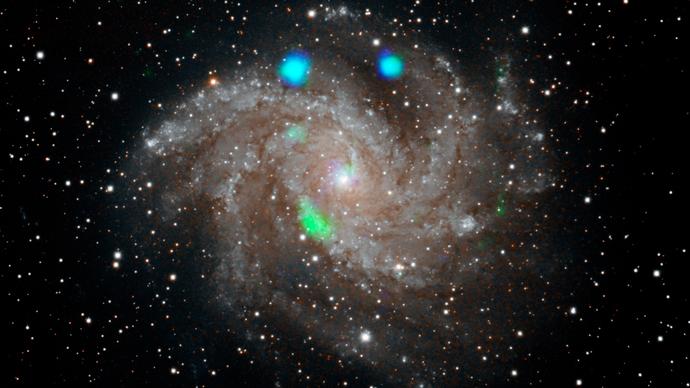
>>Most ULX’s are long lasting. Astronomers think they are created by super-dense objects—like black holes—feeding on nearby stars. The gravity of the black hole rips the star to pieces, creating a disk of debris. The material at the inner edge of the disk accelerates to speeds so fast that it heats up to millions of degrees and begins emitting powerful X-rays.
But that doesn’t explain how the mysterious green blob winked in and out of existence so quickly. The fact that no visible light was associated with the X-ray burst suggests that it was not a supernova, which usually shine brightly. The event was possibly a black hole gobbling up a very small star, which produced the short energetic burst.
Another possibility is that the event was created by a neutron star, the core of a giant star that collapsed in on itself during a supernova. Though they are only about 12.4 miles in diameter, these stars are super dense, with one teaspoon weighing a billion tons. Neutron stars’ gravity is also about 2 billion times stronger than gravity on Earth.
These incredibly dense stars create debris fields like black holes. Typically, the strong magnetic field around a neutron star channels debris to the surface, where it produces a steady stream of X-rays as the material is heated up and obliterated. However, if a neutron star spins particularly fast, the study authors hypothesize, the magnetic field would block the material from reaching the surface.<<
https://www.smithsonianmag.com/smart-news/astronomers-puzzle-over-blob-x-rays-winked-and-out-existence-180973062/